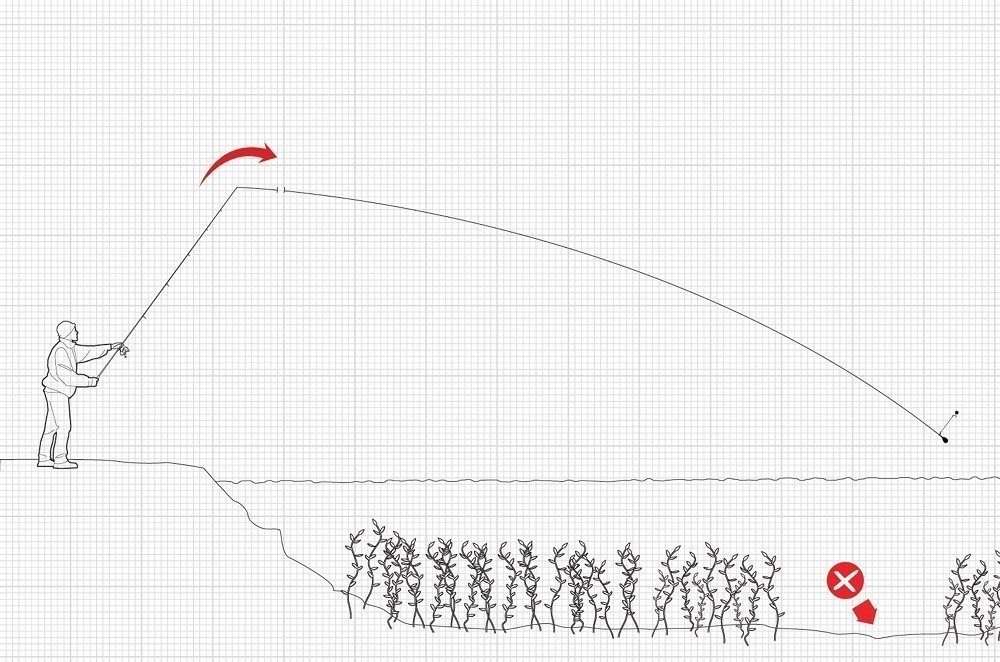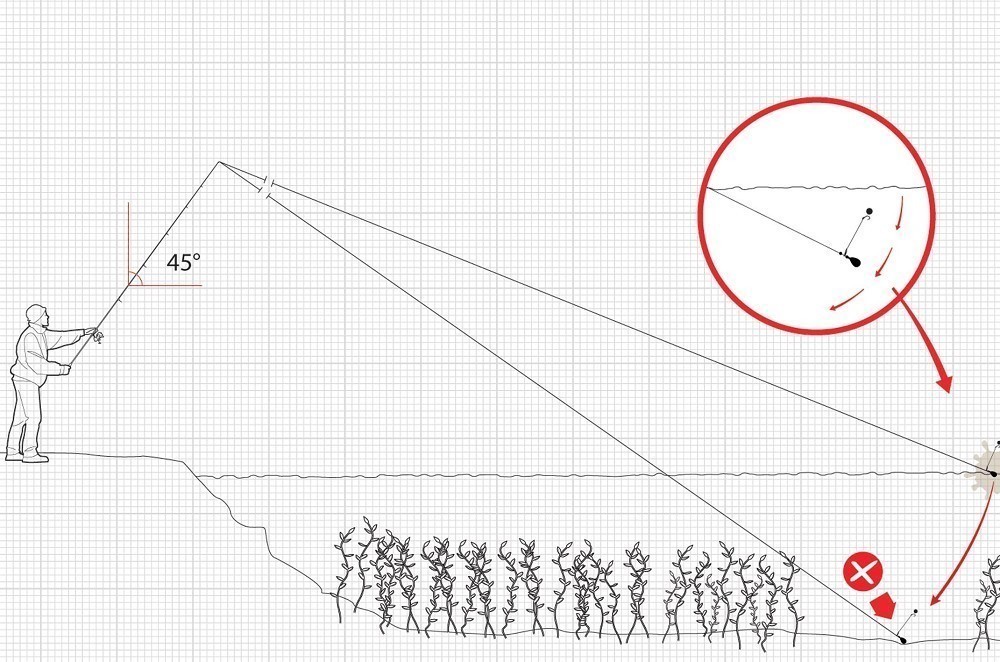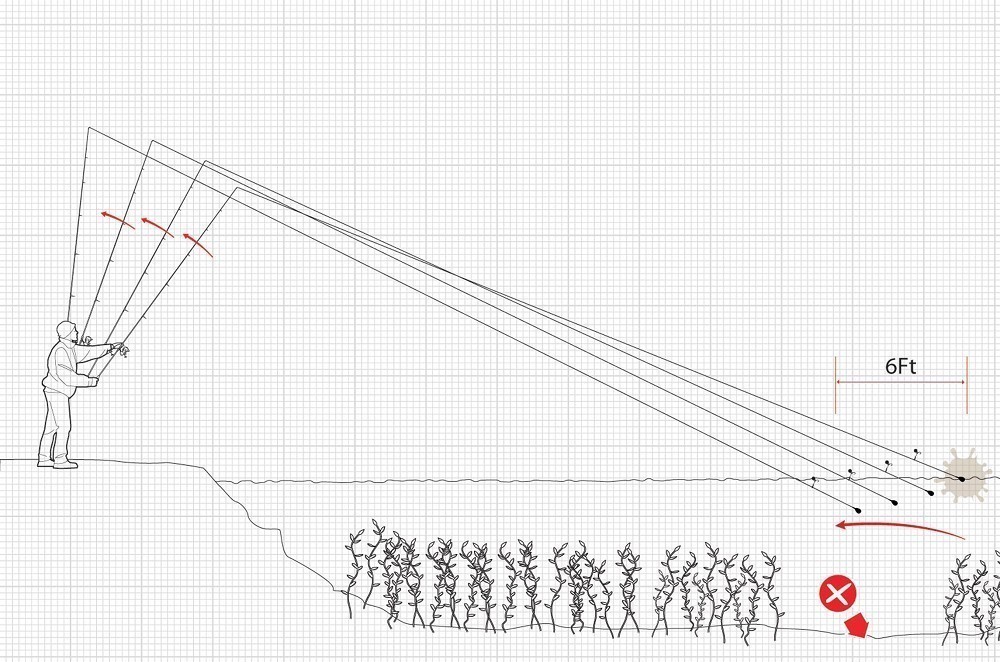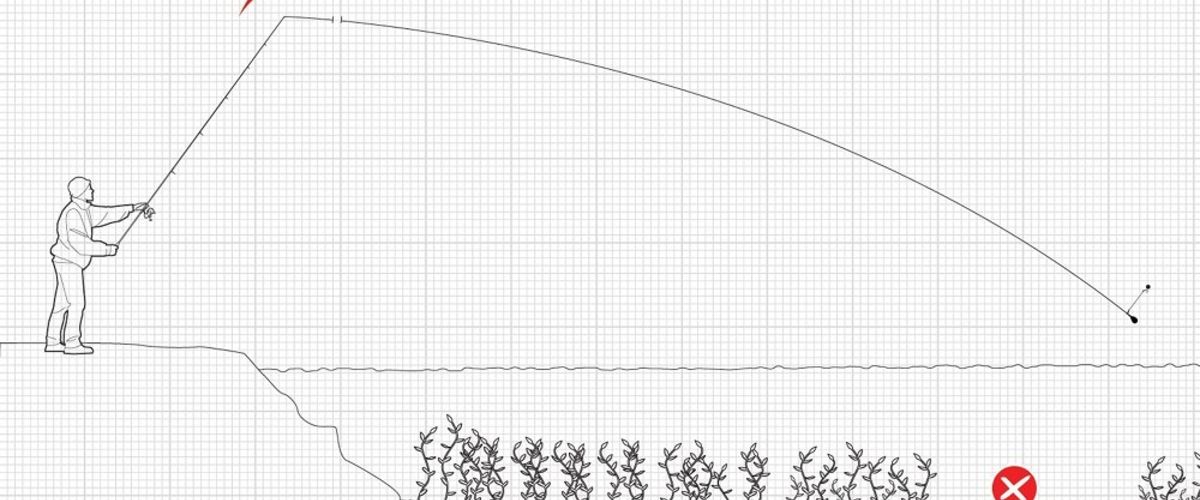
How to cast a Chod Rig correctly
Nigel Sharp answers some of your questions regarding casting chods and making them spin better
Here I'll answer a few questions CARPology reader Paul McCarthy asked having read an underwater Chod rig article written by myself. First he'd like me to expand on my Chod casting technique and how it differs from the norm. To explain this in the best way I can, I’ll start off by saying the initial over head cast is done in the same way as I’d cast any other of the lead type presentation so there’s no change there. The next bit comes when the lead reaches its drop zone. As per usual with any cast I’ll start slowing the lead down by feathering its last few yards of flight then completely stop its flight just above the water by either trapping the line leaving the spool with my finger or relying on a pre-set line clip.
Once I’ve got to this stage this is where things start to differ. With a normal lead presentation there is a hooklink which can tangle so the feathering and trapping of the line will make this lay out on impact with the surface rather like a float angler or fly fisherman would hope his rig would land across the surface. Once this has happened it’s important to hold tight and feel the lead fall through the water until you feel the lead hit the bottom. By doing this you can almost guarantee that the end game hasn’t tangled because of the arc it takes through the water and its pressure will stop things wrapping around the line or leader.
How the cast with the Chod Rig differs is due to the way the rig is set-up and as you mentioned, Paul, it slides up and down along the leader. On its flight the short stiff hooking section will fly back and hit the top bead but on feathering and trapping it will end up at the lead end of the leader. So for the Chod Rig to be fishing effectively you’ll need to make that hooking section travel back up the leader to where the top bead is. This is where the wet stuff helps out and with a little practise to master my technique for dropping this through the water you can make this happen. Like I said earlier, with a normal off-the-lead presentation a rig will swing in and touch down. By doing this, you can’t guarantee where the hooking section will end up along the leader and you can even run the risk of the hooking section staying by the lead. So to combat this, once I’ve trapped the lead’s flight with the rod up at 45-degrees, I pull the rod back until it’s at 90-degrees above my head then maintaining a tight line I’ll follow the lead’s descent with the rod until I feel the lead touch down on the bottom. In doing this I envisage the leader is falling through the water at pretty much an 80-85-degree angle and in doing this it’ll force the short stiff hooking section up the leader to the stopping bead and the lead end will punch its way 90-degrees through the weed, silt or whatever type of chod I intend to be fishing on top of.
Due to that angle, the leader as shown on the feature will settle back toward me on the bank and I’ll have an as-seen perfect presentation with the rig above the weed, silt, leaves or chod. I hope this helps you understand the importance of the way I feel my Chods down and if it makes it any clearer I don’t feel a normal off-the-lead type presentation down in this way because I run the risk of the slightly longer, more supple hooklink wrapping around the leader on its descent. I do know a few people who don’t bother to feel their Choddies down and even cast them in a high arc so they get that near 90-degree descent through the water to make a similar thing happen with the hooking section staying up the leader. I’ve also seen them catch a few by doing this but I prefer to feel my lead hit bottom just so I know what I’m fishing on.
Paul, your next niggle was about the strange bleeps you’ve been getting whilst using Solar’s Unleaded as a substitute for leadcore as it’s banned on your water. To start off with I find it very strange for a club to ban leadcore but still allow leaders of some description so maybe at the next club AGM you should ask them why they don’t allow lead running up the inside of a leader if they still allow lead weights.
Anyway, getting back to your question, you say you’ve been getting a few strange bleeps and no full-blown takes. There can be two answers to this and being as I’ve got some but I’ve not yet used it I can’t really say whether Martin’s lead-free is costing you fish or not. But whilst on the subject I’ll hazard a guess that due to Solar’s product being so supple you are lacking the T-bar effect that is caused by the much stiffer, leaded leaders. This T-bar effect not only spreads the weight, it can almost stop a fish from shaking the rig out and whilst it’s trying to do so, your bobbin should be doing that merry old dance that makes you react by hitting it.
I’m sure he’ll correct me if I’m wrong but I’m pretty sure my good friend Jim had a similar rule on a water a few years ago so he took the lead out from inside his leader and threaded fluorocarbon down it. Knowing how long a leader Jim likes to use this was a job and a half but what he caught after doing this made up for the time spent threading the fluoro. Again, I’ve not done this myself but I’d suspect what Jim had done not only helped his leader sink but that slight stiffness spreading the weight had undoubtedly helped its hooking potential and stopped them getting away with it. A great bit of thinking on his part I reckon. Anyway, it’s food for thought and it might well be worth thinking of ways to stiffen up your leader material.
As far as the size of lead goes, I don’t think with Chod Rigs the weight comes into it at all and as I explained, I think it’s all about the weight and stiffness of the leader.
Still on the subject of strange bleeps, a few years ago I was fishing with Choddies on Fox Pool and I too was suffering from strange bleeps. Being as it’s a very sheltered, deep water, odd bleeps don’t really happen unless it’s extreme weather. The bleeps I was getting were in very short sharp bursts. This led me on to the line of thinking that I was getting done on the Chods so I changed over to bottom baits. After doing this I caught a few fish and noticed a few of the smaller ones had badly damaged mouths. On asking a few regulars they explained that a certain batch of stockfish that went in had dodgy mouths. This made me think that in some ways I wasn’t getting done at all, it was just the gippy mouthed ones (that I wasn’t too keen on catching) trying their hardest to mouth my baits; bless ‘em! Because I don’t know your water Paul I can only assume that this might be one of the reasons why you’re getting strange bleeps and not full blown runs. After all is said and done, the Choddy will catch smaller fish but like the Hinge and 360ş Rigs, it’s generally a rig used for big fish. It’s also an impact rig, which works best when the fish are moving about and feeding fairly aggressively.
There are a few other reasons why you might be suffering from strange bleeps and one of the most common problems is inefficient swivels that don’t revolve freely. If the swivel doesn’t spin freely enough the curved hooking section won’t do its job and spin the hook’s gape into the carp’s mouth when its bottom lip hits it. When this happens, it will more than likely fall over and the fish won’t get hooked quickly like it should be. The answer to this problem is to use a good quality swivel.
The next query in Paul’s letter was about line lay and that he finds he is getting a much better response by fishing a very slack line. Personally I’d suspect the reason why Paul finds that he’s get better results by fishing a slack line is probably again down to the type of subtle leader he is using. As seen on the underwater feature, my Chod was fishing effectively on both slack and tight lines, so I also think it’s all on the day and the angling situation but I use a much stiffer and heavier leader.
The next part of the query was why I clip up. The reason I do this is because back in the day, before we had Baitrunners or front drag reels, I, like a lot of anglers, used Cardinal 55’s and 57’s and fished them with open bail arms. Way back then we also used lighter leads than what we do today and more often than not they were quite often fished running or with a back stop to cause a bolt effect like what we now call a Shocker Rig. Basically the line clip not only stopped the line spilling from the spool, it also added to this shock effect and even today I rarely hit a run until my line is pinged from the clip. To me the clip is just an old habit that I find hard to give up. It also helps me stay in touch with my end tackle and I know that if the line pings from the clip something’s moved my lead and like the good old days it can only help with the setting of the hook.
Paul, you’re right in the way you fish your clutches, as quite often when fishing a Chod, the lead’s buried so the last thing you want is the fish running off on a slack clutch with the lead stuck in the chod thus causing a pulley effect. This is something that I think causes a lot of hook pulls fairly quickly after bending into a fish on a choddy. What happens is the lead finally unplugs then it flies up and bumps the hook out. So to avoid this a tighter clutch will help the fish pull the lead free and by the time you hit the bite, the lead should be travelling with the fish and next to its mouth.
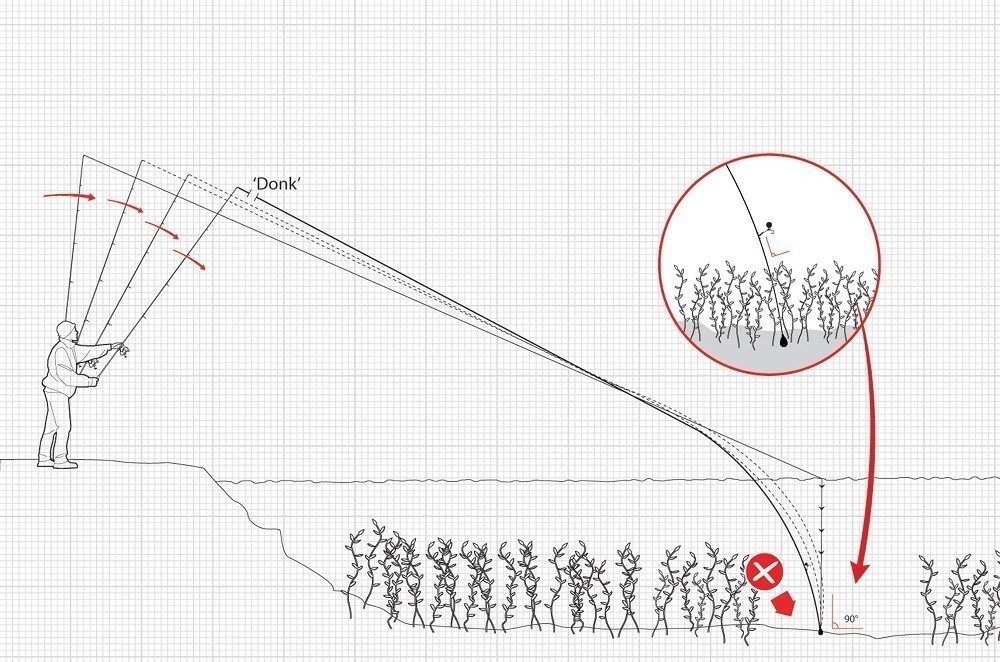 Then follow the drop of the lead with the rod. Inset: As explained, the lead lands first at 90ş through the weed, chod etc.
Then follow the drop of the lead with the rod. Inset: As explained, the lead lands first at 90ş through the weed, chod etc.Finally, Paul mentions fishing a hinge on his Chods. Well, to me it’s either a Chod Rig or a Hinge Rig and there’s no such thing as a MK2 Choddie. The problem with including a short boom or hinge to a Chod Rig is if the leader bridges across debris there’s a good chance that both hooking and boom sections will fall below the line that the leader takes. Being as the hooking section is aggressively curved to grab at anything it falls around, it’ll grab the leader rendering the rig useless. Like I said, it’s either a Choddy or a Hinge Rig so if you are going to include a boom, my general rule of thumb is to make that boom section twice the length of my hooking section so it will lay out like an off-the-lead presentation like it should do.
I’ll say it again: a Chod is an impact rig so they don’t suck it up. If they are feeding in that way it’s time for a change of presentation and a carefully balanced Hinge Rig is quite often the next road you should go down.
Anyway, Paul, I’d love to go on but I’ve run over my word count so I’ll thank you for your excellent letter and encourage you to keep them coming in.



